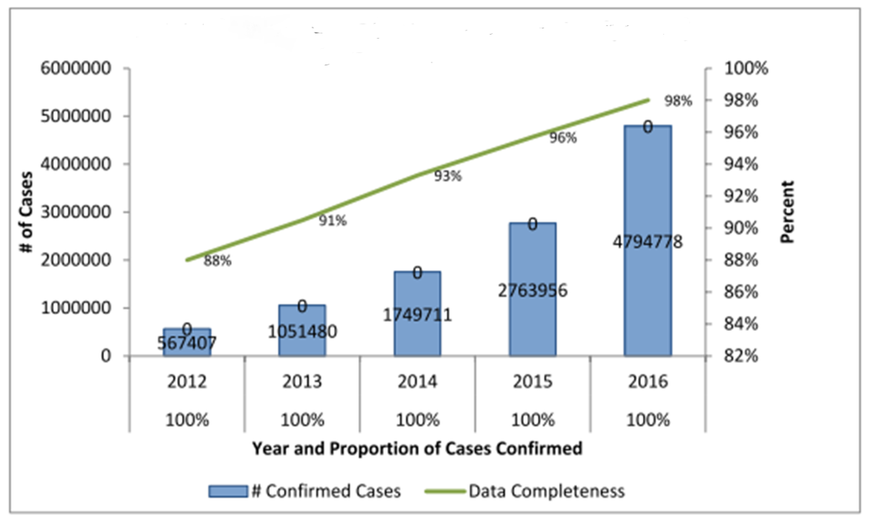Trends in malaria in Rwanda
From 2005 to 2011, Rwanda achieved significant reductions in the burden of malaria through the successful implementation and scale-up of malaria control interventions. In a survey conducted in 2005, malaria was the number one aetiology for morbidity of children under age five (P MI, 2018). In 2008, malaria dropped to the number three cause of morbidity, and by 2012 dropped further to number four for children under age five years of age. According to data provided by the Rwanda HMIS, overall malaria incidence declined 86% between 2005 and 2011; outpatient malaria cases declined 87%; inpatient malaria deaths declined 74%; and malaria test positivity rate (TPR) declined 71%. According to the 2010 Rwanda Demographic and Health Survey (DHS), malaria prevalence decreased from 2.6% in 2008 to 1.4% in 2010 in children under five years of age. Over 95% of total reported malaria cases are laboratory confirmed (PMI, 2018).
However, Rwanda was more than an 8-fold increase in reported malaria cases, from 567,407 in 2012 to 4,794,778 in 2016 (PMI, 2018). Increases in malaria cases were observed in all 30 districts. Ten districts, primarily in the Eastern and Southern regions, had the largest increases in malaria cases. The number of cases tripled in the Eastern province (from 460,460 in 2013–2014 to 1.4 million in 2015– 2016), and doubled in the Southern province (from 554,035 in 2013–2014 to over 1.1 million in 2015– 2016). Additionally, the DHS 2014–2015 revealed an increase of malaria prevalence among children under five years of age (from 1.4% in 2010 to 2.2% ) and stable prevalence among women aged 15–49 years (from 0.7 % in 2010 to 0.6%) ((NISR), (MOH), 2015). According to preliminary analysis conducted by the Malaria and Other Parasitic Disease Division (MOPDD), the vast majority of this increase is among persons over five years of age. An increase in malaria-related deaths was also reported from 419 in 2013 to 715 in 2016, but the overall case fatality rate was reported to decrease from 1.8% to 1.5% during this same period (PMI, 2018).

